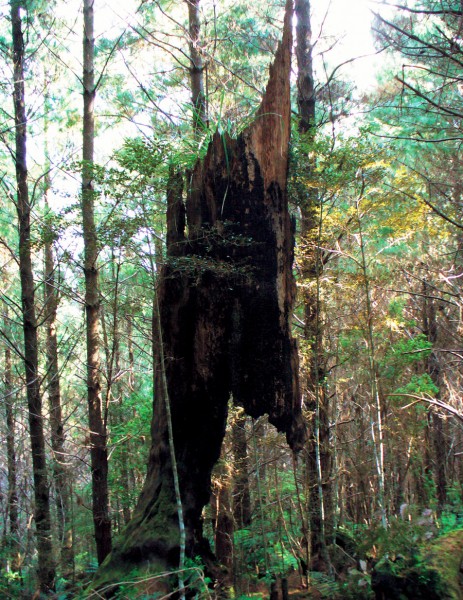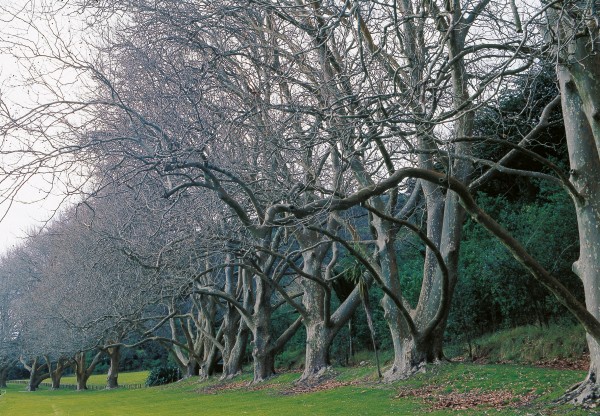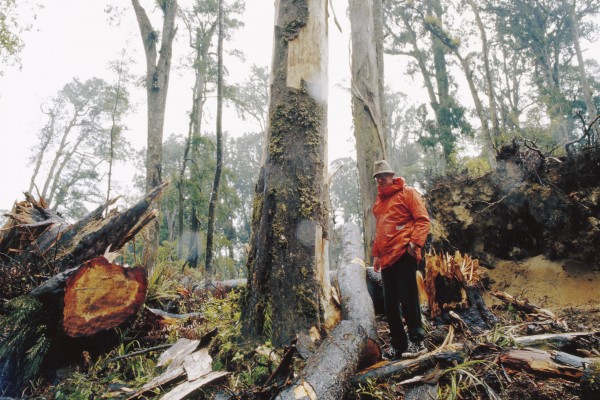Whirinaki Revisited
Remember Whirinaki Forest? Post-baby boomers may not. Situated on the south-western corner of Te Urewera National Park, its magnificent groves of podocarps are not generally well-known. Older readers, however, (like me) may have vivid memories of Whirinaki. It was one of a handful of forests that captured the public’s imagination in the 1970s and early 80s. These were years when the future of New Zealand’s native forests became a hot topic. In the mid-70s the New Zealand Forest Service made plans to selectively log Whirinaki. But they had not reckoned on a new generation of conservationists. Almost overnight, secluded Whirinaki—and the tiny logging township of Minginui—were thrust into the national spotlight. Battlelines were drawn: jobs versus trees; rednecks versus greenies; locals versus townies. These were familiar themes for the times. But nowhere were they more intense than at Whirinaki. In the end the tree-lovers won. The logging stopped at Whirinaki as it did in other forests. The new Labour government was in a reforming mood. By the end of its first term in office, it had created a whole new government department to manage native forests (the Department of Conservation, DOC). And in the same year it gave permanent protection to Whirinaki, as the Whirinaki Forest Park. That was 20 years ago. But what of Whirinaki now? As one who believed passionately in the cause to “save Whirinaki”, it was a question I had often asked myself over the years. Now that Whirinaki was no longer making the national headlines, had it become just another neglected forest, preserved in name only? And what of the people of the area—the sawmillers of Minginui, the people of Ngati Whare and Ngati Manawa? Had the promised benefits of eco-tourism been delivered to them? Or had it amounted to little more than sawdust in the Christmas stockings? I decided it was time to go to Whirinaki and find out. The robin that greeted me as I entered the forest was a good omen. My guides for the day, Rod Warne and Gareth Boyt from DOC’s biodiversity team, had attracted it over to us. Robins, I was informed, were being used as indicator species for fledging success at Whirinaki. Birds in Whirinaki? There are many, including threatened species such as kiwi, kaka, kakariki and whio (blue duck). But as with almost all mainland forests, a state of siege exists. The bad guys of the forest—introduced mammals, like rats, possums and stoats—threaten on all sides. This was one of my fears: that Whirinaki, overrun with pests, would be largely devoid of the native birdlife it once supported. Not so. The robin we were courting was one of many. It was living in a part of the forest that was intensively managed by DOC to keep all mammalian pests to very low numbers. Sufficiently low to raise the breeding success rate of the robins up from a paltry 5 per cent to the current 80–90 per cent. The distant calls of kakariki were a reminder that other birds are also benefiting from intensive pest control. Along with the kakariki, kaka and kereru numbers are up significantly in Whirinaki after decades of decline. Even more obvious were the benefits to the plant community. Regeneration was so prolific, it was difficult to believe that in some places we were walking past old logging tracks. Fushias, large-leaved coprosmas, pate and a startling diversity of ground ferns filled the understory. It was a lushness that I had not expected. But it was compelling evidence that DOC’s efforts to control voracious herbivores—like possums and deer—have been successful. Impressive too are the number of threatened plants that are found in Whirinaki. These include Turner’s kohuhu (Pittosporum turneri), Dactylanthus taylori, and numerous orchids and mistletoes. Luckily for them, possum control at Whirinaki has so far been pushed out to cover over 20,000 hectares. Yet even the treasures on the forest floor were not enough to stop me gazing skywards. The urge was irresistible. Above, and around me, stood the Famous Five—the five giant podocarps that is—miro, matai, totara, rimu and kahikatea. These were the trees I’d come to see, and it’s hard not to be moved by their presence. They grow together at Whirinaki as tall and as dense as any podocarp forest you will find; only Pureora on the western side of Taupo comes close. They are old trees. Most are 400– 600 years old, growing in profusion on a thick bed of pumice and ash, built up over 40,000 years. Once, not so long ago, kokako and huia would have danced in their lofty branches. Perhaps some of them, when they were saplings, were browsed by moa. Yet like all podocarps, their lineage is even older. To walk in the forests of Whirinaki is, in the famous words of David Bellamy, to walk in a “dinosaur forest”. But time has moved on in other ways at Whirinaki. Not all of the old tracks are reverting to their Gondwanan origins. Some are being developed for decidedly comtemporary activities. Like the 16 km mountain-bike track that was opened last year. Notable for its spectacular scenery, it has attracted international attention. Not that it hasn’t had its detractors. John Sutton, DOC’s area manager, admits the local Forest & Bird group took a bit of convincing. But now that the track is up and running, most people have come round to the idea. Which is just as well, since DOC is not just committed to making the forest work in an ecological sense; but wants it to work in a social sense as well. In the long term that means fostering a sustainable, locally run, eco-tourism industry. Eco-tourism in Whirinaki? I flinched at the thought. Up until then I had been relishing the solitude of the forest; the idea of sharing Whirinaki with energetic mountain-bikers and busloads of Japanese tourists filled me with dread. Therein lies the dilemma for Whirinaki, as it does for many parks in many corners of the world. How do you “save” natural areas and at the same time share them? Or to put it another way, how do you spread the benefits of ecological success to the society that supports it? These were the questions I still needed answers for at Whirinaki and, as I suspected, the social scars of the past were proving a lot harder to heal than the environmental ones. Minginui, the former logging town at Whirinaki, tells the story. Flanked by the mighty trees of Whirinaki on three sides, it is a town inextricably linked to the forest. Yet, like a broken street lamp, its connections seem severed. The streets are silent and empty; the general store is boarded up. To an outsider like me, it was as if no one lived there any more. But they do. There are about 250 residents still living in Minginui. Most have iwi ties with Ngati Whare or Ngati Manawa. Their ancestral connections to the forest go back hundreds of years. These are some of the locals who are awaiting the promised fruits of eco-tourism. John Sutton, and others I spoke to at DOC, are all too aware of their plight. DOC has statutory obligations to form partnerships with the community and with iwi. Building a sustainable eco-tourist industry is part of that commitment. “But it will take time,” says Sutton. It’s a tricky balance. It is hard to imagine Whirinaki becoming a Yellowstone National Park overnight, but there is surely great potential in the place, especially if DOC continues to be successful in improving the biodiversity. Small town economics can be a dismal business at the best of times. But conservationists’ claims that the township of Minginui has a great asset on its doorstep are not mere rhetoric. Perhaps, like a good wine, they are just taking time to mature. Despite the ongoing challenges, I felt heartened by what I’d seen at Whirinaki. Much has been achieved for the forest in the last 20 years. From a biological perspective Whirinaki was in better shape than I expected, much better shape. The ecological restoration would continue, and I look forward to the possibility that before too long the sound of birds like the kokako might be heard again in the forests of Whirinaki, and, in time, the sound of people talking and laughing would be heard, too.







































































































































































































